-
Hollow-core optical fiber to enable high-power military sensors
The intensity of light that propagates through glass optical fiber is fundamentally limited by the glass itself. A novel fiber design using a hollow, air-filled core removes this limitation and significantly improves performance by forcing light to travel through channels of air, instead of the glass around it. DARPA’s spider-web-like, hollow-core fiber design is the first to demonstrate single-spatial-mode, low-loss and polarization control — key properties needed for advanced military applications such as high-precision fiber optic gyroscopes for inertial navigation.
-
-
Georgia Tech’s VentureLab ranks No. 2 among university-based incubators
Georgia Tech’s VentureLab helps create startup companies based on Georgia Tech research. Since its formation in 2001, VentureLab has launched more than 150 technology companies which have attracted more than $700 million in outside funding. VentureLab program has been ranked second in the world in a new benchmarking study. The study, conducted by UBI Index, examined 150 university-based business incubators in twenty-two different countries.
-
-
U.S. research universities subject to sustained cyberattack campaign by China
Leading U.S. research universities report that they have been subject to millions of Chinese hacking attempts weekly. The Chinese are aware that universities, and the professors who do research under the schools’ auspices, receive thousands of patents each year in areas such as prescription drugs, computer chips, fuel cells, aircraft, medical devices, food production, and more. The Chinese government-sponsored cyberattacks on American research universities are an expansion of efforts by China to steal information that has commercial, political, or national security value.
-
-
CIA copied, employed “Q”-developed 007 outlandish gadgets

The real-life CIA copied and employed a few outlandish gadgets from James Bond movies. The CIA was successful copying Rosa Klebb’s infamous spring-loaded poison knife shoe from the film From Russia with Love, but was less successful trying to copy the homing beacon device used in Goldfinger to track the villain’s car. The CIA version had “too many bugs in it,” former CIA director Allen Dulles would later say, and stopped working when the enemy entered a crowded city.
-
-
Dealing with man-made earthquakes
Between 1967 and 2000, central and eastern United States experienced on average 20 earthquakes above a magnitude 3.0 a year. Between 2010 and 2012, the number of earthquakes above a magnitude 3.0 in these regions has dramatically increased to an average of 100 a year. This increase in earthquakes prompts two important questions: Are they natural, or man-made? And what should be done in the future as we address the causes and consequences of these events to reduce associated risks?
-
-
STEM education and U.S. national security
Los Alamos National Laboratory director Charlie McMillan will be one of seventeen speakers at this year’s TEDxABQ. TEDxABQ is an independently organized event in Albuquerque, New Mexico, affiliated with the popular TED Talks series.McMillan will discuss the linkage between early education in science, technology, engineering, and mathematics (known as STEM) and national security.
-
-
Crawling robot examines, evaluates condition of load-bearing cables
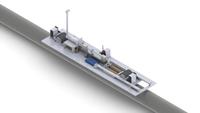
Severe weather events inflict damage and destruction. The condition of infrastructure and its components may contribute to the overall damage: weak components and damaged elements make infrastructure less likely to withstand the stress of a storm. Researchers have developed a crawling robot capable of examining and evaluating the condition of load-bearing cables, such as those found in bridges, elevators, and cable cars.
-
-
Mother Nature offers best protection for coastal communities’ infrastructure
Extreme weather, sea-level rise, and degraded coastal ecosystems are placing people and property at greater risk of damage from coastal hazards. The likelihood and magnitude of losses can be reduced by intact ecosystems near vulnerable coastal communities. Scientists say that natural habitats such as dunes and reefs are critical to protecting millions of U.S. residents and billions of dollars in property from coastal storms.
-
-
Better teaching for inquiring minds
Inquiry-based learning is an educational method centered on the investigation of questions, scenarios, or problems. It is seen by many as a positive alternative to traditional forms of instruction where students are required to simply memorize information.
-
-
Concrete recycling robot disassembles concrete structures for recycling, reuse
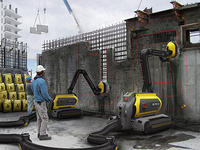
Current concrete-demolition techniques require a lot of power crushing, separation, and machinery, not to mention the fact that they waste a lot of water in order to prevent dust blooms during operation. A new concrete recycling robot is designed efficiently to disassemble concrete structures without any waste, dust, or separation and enable reclaimed building materials to be reused for new prefabricated concrete buildings. It does so by using a water jet to crack the concrete surface, separate the waste, and package the cleaned, dust-free material.
-
-
Climate change, severe weather threaten U.S. energy sector: Dept. of Energy
The U.S. entire energy system is vulnerable to increasingly severe and costly weather events driven by climate change, according to a U.S. Department of Energy report published last week. These climate and weather trends — increasing temperatures, decreasing water availability, more intense storm events, and sea level rise — each independently, and in some cases in combination, could restrict the supply of secure, sustainable, and affordable energy critical to U.S. economic growth.
-
-
Student teams compete in U.S. Navy’s RoboBoat competition
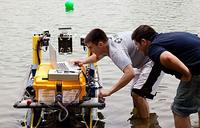
In a race against one another and the clock, robotic boats are battling it out at the 6th International RoboBoat Competition, which began 8 July and ends 14 July. The Office of Naval Research (ONR)-co-sponsored competition takes place on a pond at the Founder’s Inn and Spa in Virginia Beach, Virginia. The event features fifteen student teams racing their custom-designed and built boats.
-
-
DARPA’s disaster robot competition moves to final stage
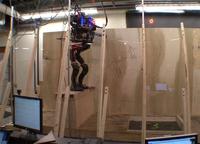
On Monday, 8 July 2013, the seven teams which progressed from DARPA’s Virtual Robotics Challenge (VRC) arrived at the headquarters of Boston Dynamics in Waltham, Massachusetts to meet and learn about their new teammate, the ATLAS robot. ATLAS is one of the most advanced humanoid robots ever built, but is essentially a physical shell for the software brains and nerves that the teams will continue to develop and refine. The robot will have to perform a series of tasks similar to what might be required in a disaster response scenario.
-
-
U.S. power plants use more coal, bucking the trend toward natural gas
Power plants in the United States are burning more coal to produce electricity, bucking the trend toward using natural gas, and in the process emitting more greenhouse gasses into the atmosphere, a new government report says. Burning coal to produce electricity was popular just a few years ago, but hydraulic fracturing led to a natural gas boom, driving down gas prices and making natural gas more competitive with coal. The demand for natural gas got so high, however, that its price began to creep up at the same time that the price of coal dropped because of weakening demand for it.
-
-
Japan to restart nuclear power plants
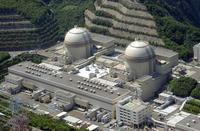
Japan’s fifty nuclear power plants were taken off-line in the wake of the 2011 Fukushima nuclear disaster, but the government Prime Minister Shinzo Abe, which took office in December, said it was planning to restart Japan’s nuclear power generation program.
-
More headlines
The long view
New Technology is Keeping the Skies Safe
DHS S&T Baggage, Cargo, and People Screening (BCP) Program develops state-of-the-art screening solutions to help secure airspace, communities, and borders
Factories First: Winning the Drone War Before It Starts
Wars are won by factories before they are won on the battlefield,Martin C. Feldmann writes, noting that the United States lacks the manufacturing depth for the coming drone age. Rectifying this situation “will take far more than procurement tweaks,” Feldmann writes. “It demands a national-level, wartime-scale industrial mobilization.”
How Artificial General Intelligence Could Affect the Rise and Fall of Nations
Visions for potential AGI futures: A new report from RAND aims to stimulate thinking among policymakers about possible impacts of the development of artificial general intelligence (AGI) on geopolitics and the world order.
Smaller Nuclear Reactors Spark Renewed Interest in a Once-Shunned Energy Source
In the past two years, half the states have taken action to promote nuclear power, from creating nuclear task forces to integrating nuclear into long-term energy plans.
Keeping the Lights on with Nuclear Waste: Radiochemistry Transforms Nuclear Waste into Strategic Materials
How UNLV radiochemistry is pioneering the future of energy in the Southwest by salvaging strategic materials from nuclear dumps –and making it safe.
Model Predicts Long-Term Effects of Nuclear Waste on Underground Disposal Systems
The simulations matched results from an underground lab experiment in Switzerland, suggesting modeling could be used to validate the safety of nuclear disposal sites.
